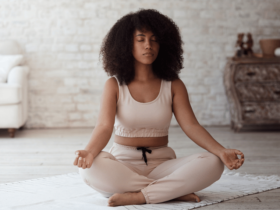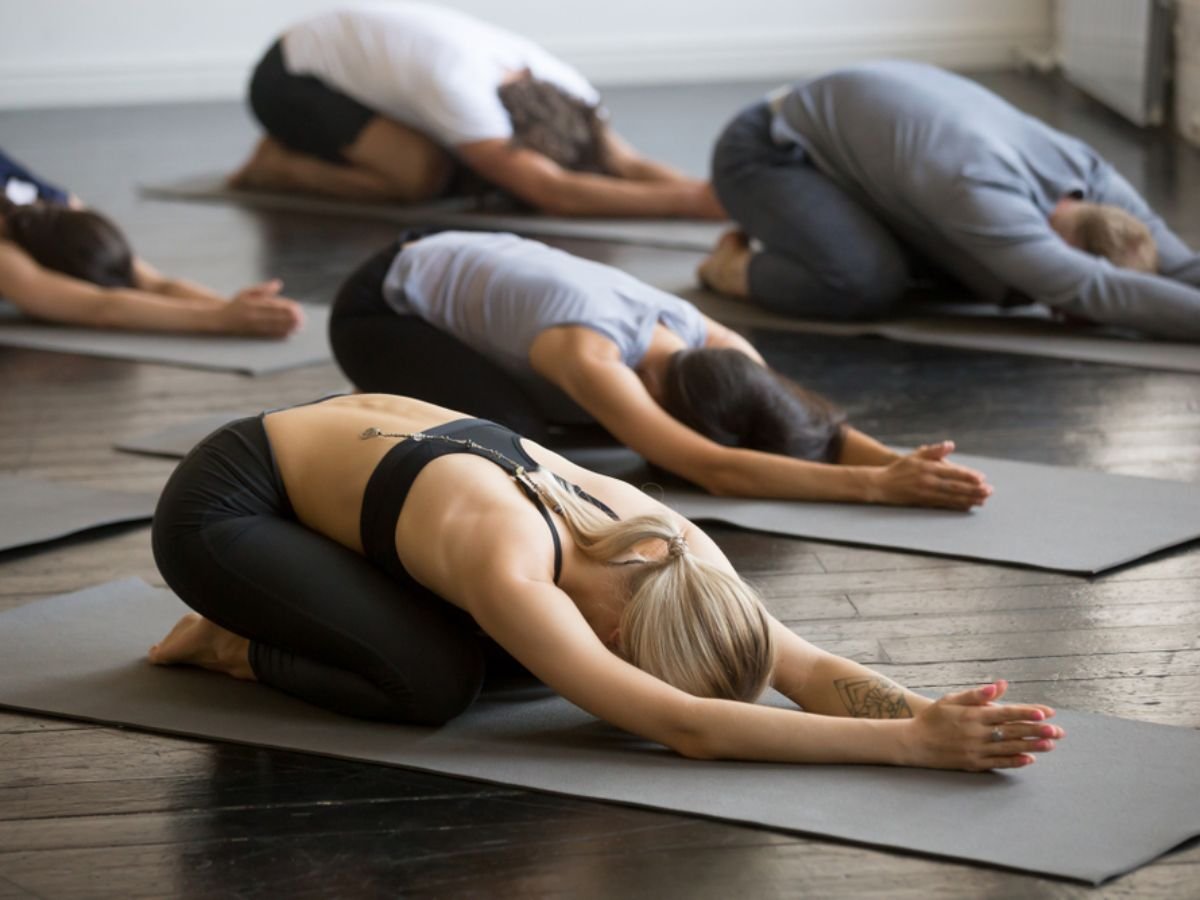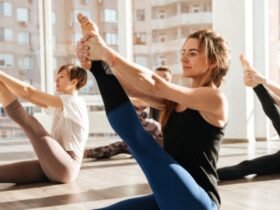Chronic pain is troubling since it can lead to frustration, mobility issues, and emotional difficulties. A lot of individuals reach out for medicines or opt for surgical treatments, but there is a question: What if there is a way to easily relieve chronic pain? In recent studies, yoga postures have been regarded as a panacea for chronic pain. In this article, we’ll look at a few yoga poses that help manage pain, increase mobility, and positively influence your general wellness. Even if you are a beginner or have been doing yoga for a long time, you will understand how yoga helps in coping with chronic pain.
Chronic Pain’s Effect on Life
Lasting sources of pain can be problematic and crippling, as it impacts people residing across the world. The National Institutes of Health, for example, report that nearly one out of every five adults in the United States suffers from ongoing pain, which is pain that lasts for three months or longer. Chronic pain can occur due to a number of common issues, including arthritis, lower back pain, fibromyalgia, and even conditions like migraines.
Chronic discomfort does not only make a person hurt in a physical sense, but it can also cause mental anguish, as well as psychological issues such as anxiety and depression. It often prevents a person from moving or doing normal activities, which decreases the standard of living. Though relief can be achieved from medications, physical therapy, and surgery, there are increasing numbers of individuals looking for substitutes or additional treatments for their pain.
This is where yoga comes in. Studies reveal that practicing yoga, at least the votive postures, together with breath control and concentration techniques, is effective for many people with various pain conditions. Yoga helps to lengthen and strengthen muscles, enhance range of motion, decrease stress, and improve proprioception—important aspects of pain management.
How Chronic Pains Are Eliminated Using Yoga
For regular chronic pain sufferers, yoga practices and therapies are often recommended by dieticians, physicians, and physiotherapists. These can help target the affected area. A list of specific techniques or steps for yoga poses follows, which can aid in the reduction of chronic pain:
1. Chronic Upper Back Pain – Cat-Cow Pose (Marjaryasana-Bitilasana, Core Strengthening)
The Cat-Cow Pose is beneficial for individuals suffering from medial or mid-back pain. This is mainly because Cat-Cow enhances the range of movement, especially with the back.
Steps involved:
- Start in a four-point position with wrist bones aligned with the ankles, while the buttocks remain elevated slightly without intentionally stretching the core.
- Inhale deeply, allowing the abdomen to drop toward the ground, lifting the chest, buttocks, and head toward the ceiling while engaging the core.
- As you exhale, engage the core tightly first, then curl the back and bring the chin towards the chest. This begins the cat pose.
- Repeat this cycle 5 or more times, focusing on breathing in through the nose and out through the mouth.
Why it helps: The Cat-Cow Pose promotes core strength, which can be beneficial for targeting areas such as the spinal region. Chronic lower and upper back pain can be alleviated through this exercise.
2. Adho Mukha Svanasana – Full-Body Over Stretching in the Back
This pose is an effective full-body stretch that targets the back, legs, shoulders, and hips. It is beneficial for those suffering from chronic pain in the back and legs.
How to do it:
- Start in a tabletop position with knees and hands on the mat.
- Press your heels down to the floor, allowing your hips to rise and creating a shape resembling an inverted ‘V’.
- Ensure your hands are at shoulder width and feet are hip-width apart.
- Hold this position for 5-10 breaths, then slowly return to the initial position.
Why it helps: The stretch helps relieve tension in the lower back, legs, and hips, promoting blood circulation and reducing inflammation or pain throughout the body.
3. Balasana – Recovery Pose for Severe Pain (Child’s Pose)
Child’s Pose (Balasana) is an excellent pose for those with chronic pain, particularly in the back and hips. It also helps with recovery from Patello Femoral Pain, commonly found in older individuals.
How to do it:
- Sit on the floor with knees apart and toes touching each other. Rest your torso on the ground, extending your arms or letting them rest beside you.
- Place your forehead on the mat and breathe deeply for 5-10 breaths.
Why it helps: This pose helps release tension from the back, hips, and lower back, promoting relaxation and improving mobility in areas affected by chronic pain.
4. Pigeon Pose (Eka Pada Rajakapotasana) – Hip and Lower Back Stretch
Pigeon Pose targets the glutes, lower back, and hip flexors, areas often impacted by chronic pain.
How to do it:
- Start in a tabletop position and bring one knee behind your wrist while extending the opposite leg straight back.
- Keep a bend in the front leg at a 90-degree angle and lower your hips toward the mat.
- Hold the position for 5-10 breaths, then switch to the other side.
Why it helps: This pose helps relieve tightness in the hips and lower back, areas that commonly experience chronic pain. Stretching these muscles can reduce discomfort while enhancing mobility.
5. Bridge Pose (Setu Bandhasana) – Back and Hip Relief
Bridge Pose strengthens the gluteus muscles, lower back, and core, while extending the chest and spine. It is especially beneficial for individuals with chronic back pain and tight hip flexors.
How to do it:
- Lie on your back with knees and feet pointing toward the ceiling in alignment with your hips.
- Engage your glutes and push through your feet to lift your hips toward the ceiling while keeping your shoulders on the mat.
- Hold this position for 5-10 breaths, then gently lower your hips to the floor.
Why it helps: Bridge Pose enhances strength in the lower back and hips, supporting the spine and easing pain. It also stretches the anterior body, relieving tension in the chest and hip flexors.
The Importance of Yoga Treatment for Chronic Pain Relief
Yoga is a vast domain that addresses relief for chronic pain, focusing not only on the physical aspect. Here’s why yoga postures are so beneficial:
- Reduction of Pain: Studies have shown that yoga significantly reduces pain levels from conditions like arthritis, fibromyalgia, and lower back pain. Inverted poses and muscle strengthening help release tension, promote flexibility, and provide comfort.
- Enhanced Range of Movement: Yoga poses can help patients who struggle with movement due to pain. Stretching muscles and increasing joint movement are essential for improving mobility and reducing pain.
- Better Posture and Alignment: Yoga encourages awareness of how the body moves, helping to improve posture and alignment. This can alleviate excess stress and prevent muscle tension, particularly in the neck and back.
- Stress Alleviation: Yoga is effective in managing stress, which often contributes to muscle spasms and chronic pain. Mindfulness and relaxation techniques are essential for relieving tension and reducing pain.
Yoga offers a holistic approach to managing chronic pain, helping to not only address the physical symptoms but also improve mental wellness. Whether you’re just starting or already familiar with yoga, incorporating these poses into your routine can help manage pain and improve overall quality of life.
How to Implement Yoga Postures for Chronic Pain Relief in Daily Life
Incorporating yoga into your routine doesn’t need to be overwhelming. Here are some simple ways to integrate yoga postures into your daily life for chronic pain relief:
1. Start with Short Sessions
If you’re new to yoga, begin with short sessions (10-15 minutes) that focus on gentle poses, like Child’s Pose, Cat-Cow, and Downward Dog. These poses can be practiced every day to build strength and flexibility without overexerting yourself.
2. Focus on Your Breath
Incorporate deep, mindful breathing (pranayama) into your practice. Slow, controlled breaths help activate the relaxation response in the body, which can help reduce pain and increase emotional well-being.
3. Listen to Your Body
It’s important to listen to your body and modify poses as needed. If a certain posture causes pain, back off or use props (like blankets, blocks, or straps) to support your body. Yoga should never cause pain; it should feel like a stretch or gentle effort.
4. Create a Routine
Aim to practice yoga regularly, even if it’s just for 10 minutes a day. Consistency is key in building strength and flexibility over time, and it can help make yoga a part of your daily routine.
5. Seek Professional Guidance
If you’re dealing with severe chronic pain or a specific injury, consider working with a certified yoga instructor or physical therapist who specializes in pain management. They can provide tailored guidance and modifications to ensure you’re practicing safely and effectively.
Final Thoughts:
Yoga postures can offer powerful relief for those struggling with chronic pain, helping to reduce discomfort, increase mobility, and enhance overall well-being. By incorporating yoga into your daily routine, you not only address the physical aspects of pain but also cultivate mindfulness and emotional resilience. Whether you’re new to yoga or already familiar with its practice, start with gentle poses, stay consistent, and be patient with your body’s healing process. Share your experiences with yoga for pain relief in the comments below, and don’t forget to share this blog with anyone who may benefit from a natural approach to managing chronic pain.
















4 Comments
View Comments